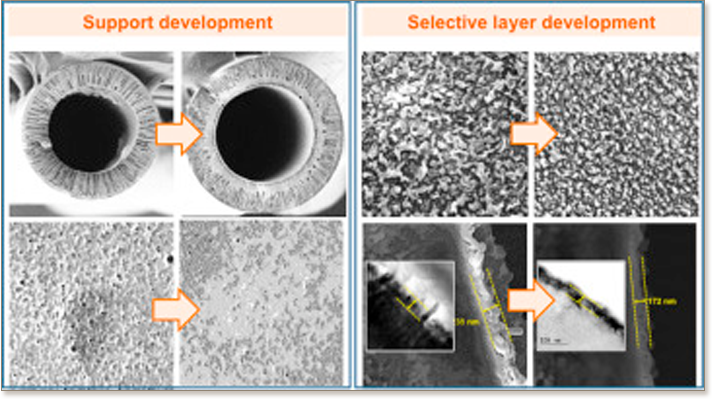Outer-selective thin film composite (TFC) hollow fiber membranes for osmotic power generation
N. L. Le, N. M. S. Bettahalli, S. P. Nunes, T.-S. Chung
Journal of Membrane Science, (2016)

The pressure-retarded osmosis (PRO) process is a green technique for power generation to respond the world's need of energy sustainability. In this study, we have developed the vital component of the process, i.e. membrane, in the configuration of the outer-selective thin-film composite (TFC) hollow fiber, which is more practical than other configurations in the real applications. The support layer morphology and the formation of the selective polyamide layer have been optimized for a good PRO performance. The results show that the bore fluid with higher amount of the solvent N-methyl-2-pyrrolidone leads to full finger-like hollow fibers, which provide higher flux but lower pressure tolerance. The addition of higher amount of diethylene glycol into the dope solution, improves the pore formation and suppresses the macrovoid formation, while properly lowering the take-up speed increases their wall thickness and pressure tolerance. A simple alcohol-pre-wetting approach on the fiber support leads to a smooth and thin polyamide layer, which is favorable for a high water flux and power density. Its efficiency follows this order: n-propanol>ethanol>methanol>water. The n-propanol pre-wetted TFC membrane can tolerate 17 bar with a peak power density of 9.59 W/m2 at room temperature, using 1 M NaCl solution as the draw solution and DI water as feed. This work demonstrates the potential of outer-selective TFC hollow fiber membranes for energy conversion via PRO process, provides useful database to fabricate suitable support morphology and raise a simple technique to practically form a thin and smooth polyamide layer.